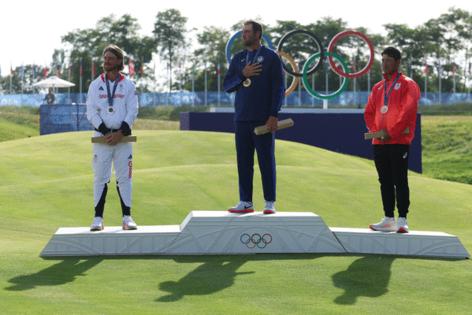Jim Souhan: Top-three finishes are a new way to look at golf history
Published in Golf
MINNEAPOLIS — With the end of the U.S. Amateur at Hazeltine and the relevant portion of men’s professional golf headed to the BMW Championship, it’s time to ask a provocative question about golf history.
A question that I am stealing.
Jamie Kennedy, the director of digital content for Golf Digest, recently compiled a chart of top-three finishes by the greatest modern golfers, a chart that asks this: Would we look at the game’s historical figures differently if gold, silver and bronze medals were awarded at each tournament, instead of the second- and third-place finishers receiving nothing more than a check and condolences?
The short answer: yes.
The longer answer: heck, yes.
The longest-running modern golf debate is whether Jack Nicklaus should be considered the greatest golfer of all time because he won 18 majors, or whether Tiger Woods, who won 15 majors, supplanted him because no one was more dominant than Woods in his prime and Woods at least theoretically played against deeper fields.
It’s a great debate because each player can make a strong case.
Now look at that debate through the prism of the podium (counting majors played since 1945).
Nicklaus won 18 majors, finished second in 19 and was third in nine. That’s 46 major podium finishes.
Woods won 15 majors, finished second seven times and was third four times. That’s 26 major podium finishes.
It’s not really close, is it?
Guess who has the third-most podiums in modern golf history?
It’s not Gary Player, Ben Hogan, Tom Watson, Arnold Palmer or Lee Trevino.
It’s Phil Mickelson.
The totals: Mickelson 25, Palmer 19, Player and Watson 18, Hogan 17, Trevino nine.
Mickelson won six majors. Had he not run into Woods in his prime, that number could have been much higher. Even as his record stands, Mickelson probably should rank higher among the game’s all-time greats, no matter how hard he is to like.
Outside the top seven in all-time podiums, there is only one player who has more than 12, and it’s not Rory McIlroy, Seve Ballesteros, Nick Faldo or Brooks Koepka.
It’s Ernie Els, who had 15. He’s another player who, had he not competed against Woods, might have become a more celebrated figure.
Should golf move to the Olympic model of treating top-three finishers as winners?
Minnesotans know the answer.
St. Paul native Suni Lee earned three bronze medals over the last two Olympics. Do we say she lost the gold or that she earned bronze? When she won the bronze in the all-around in Paris, should she have been left sulking on the sideline, or do you prefer images of her celebrating with gold medal winner Simone Biles, both beaming as they held the American flag?
Of the top 15 golfers of all time in terms of podium placements, only two are currently contending in major championships — Koepka (who has nine podiums) and McIlroy (who has 12).
Golf has never been deeper in talent than it is now. But unless McIlroy and/or Koepka have a late-career surge, the greats of the game will remain unchallenged in both major championships and top-three finishes.
McIlroy is 35. Koepka is 34. They’re both running out of time.
As for the two most dominant golfers currently on the PGA Tour, well, they have a long way to go to become historical figures.
Scottie Scheffler has dominated the golf world for three years. He is 28. He has five major podium finishes (plus an Olympic gold medal in Paris).
Xander Schauffele, who has won two majors this year, is 30 and has earned six major podium finishes.
What conclusions can we draw, after factoring in podium finishes?
— You can call Nicklaus the greatest golfer ever and still not fully express how dominant he was.
— Mickelson is underrated, in part because he competed in the Tiger era.
— The depth of modern golf fields makes dominance in major championships almost impossible.
Thanks to Jamie Kennedy for a fascinating idea.
©2024 StarTribune. Visit at startribune.com. Distributed by Tribune Content Agency, LLC.







Comments